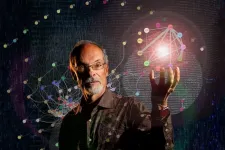Where are the Foreigners of the First International Age?
Researchers use genetic and isotopic data to investigate human mobility at the Bronze Age city of Alalakh in Turkey
2021-06-30
(Press-News.org) The Bronze Age in the eastern Mediterranean has long been considered by researchers to have been the 'first international age,' especially the period from 1600-1200 BC, when powerful empires from Anatolia, Mesopotamia, and Egypt set up large networks of subordinate client kingdoms in the Near East. These empires fought, traded, and corresponded with one another, and ancient texts from the period reveal rich economic and social networks that enabled the movement of people and goods.
A new study conducted by an interdisciplinary team of archaeologists, geneticists, and isotope experts, and published in PLOS ONE, investigated the movement of people in this period at a single regional center, a Bronze Age city-state called Alalakh in present-day southeastern Turkey. Their results indicate that the majority buried at Alalakh were raised locally and descended from people who lived in the region.
The team's goal was to see if the high levels of interregional connectivity evidenced by the architecture, texts, and artifacts found at the site during 20 years of excavations, sponsored by the Turkish Ministry of Culture and Tourism and Hatay Mustafa Kemal University, could be detected among the population buried at the city.
To do so, they conducted strontium and oxygen isotope analyses on tooth enamel, which can detect whether an individual grew up locally at Alalakh or moved there only during adulthood. The genetic data on the other hand can be used to determine where a person's recent ancestors came from.
The isotope analysis identified several non-local individuals. However, their DNA showed an ancestry that was local to Alalakh and neighbouring regions. "There are two possible explanations for our findings," said co-lead author Stefanie Eisenmann from the Max Planck Institute for the Science of Human History. "Either these individuals are short-distance migrants from the region or return-migrants, people whose parents or grandparents originally came from Alalakh."
Only one sampled individual, an adult woman, was not part of the local gene pool, instead showing ancestry that most closely matched groups in Central Asia. However, her isotopic signatures suggested a local upbringing. "We expected the isotope analysis to show that this person immigrated to Alalakh, since her genetic data was so different from the rest of the population, so we were surprised to see that she was likely native to Alalakh. It could have been her parents or grandparents who made the move, instead," explained Tara Ingman, the other lead-author of the study from Koç University.
While different types of mobility were identified, including short-distance, long-distance, and return migration, there were no complete foreigners in the dataset. Most people were born and raised at Alalakh and also their ancestors came from the region.
"There are several ways to explain this. It is possible that far less long-distance migrants were living at Alalakh than we had previously thought. Another possibility is that we haven't found their graves, yet. Perhaps most individuals that came from far away were not buried directly at Alalakh, or in a way we cannot trace," said Murat Akar, director of the excavations.
INFORMATION:
[Attachments] See images for this press release:

ELSE PRESS RELEASES FROM THIS DATE:
2021-06-30
University of Leeds news
Embargo: Wednesday 30 June, 7pm GMT
Bereavement care lacking for ethnic minorities
Grieving friends and relatives from ethnic minority backgrounds are suffering from a lack of appropriate help to cope with the loss of a loved one, especially during the COVID-19 pandemic, researchers say.
And the scarcity of data on the services that are available means providers do not know how support should be delivered to ensure they are suitable for different groups of people.
The researchers, led by the University of Leeds and the University of Sheffield, reviewed evidence on UK bereavement care for ethnic minority ...
2021-06-30
Research at Baylor College of Medicine, the Texas Heart Institute and collaborating institutions is moving a novel promising gene therapy to treat heart failure closer to the clinic.
Published in Science Translational Medicine, the study showed that knocking down the Hippo signaling pathway in cardiomyocytes in the hearts of pigs after they had a heart attack, resulted in heart tissue renewal and improved function when compared with pig hearts in which the Hippo signaling pathway was not modified. Given that the pig's heart is considered a valuable model to study the human heart, the findings suggest that this gene therapy may be useful in treating human heart failure.
Heart failure remains the leading cause of mortality in the western ...
2021-06-30
A study published in Science Advances reports on the unexpected observation of thermal waves in germanium, a semiconductor material, for the first time. This phenomenon may allow a significant improvement in the performance of our electronic devices in a near future. The study is led by researchers from the Institute of Materials Science of Barcelona (ICMAB, CSIC) in collaboration with researchers from the Universitat Autònoma de Barcelona, and the University of Cagliari.
Heat, as we know it, originates from the vibration of atoms, and transfers by diffusion at ambient temperatures. Unfortunately, ...
2021-06-30
Cambridge scientists have identified 200 approved drugs predicted to work against COVID-19 - of which only 40 are currently being tested in COVID-19 clinical trials.
In a study published today in Science Advances, a team led by researchers at the University of Cambridge's Milner Therapeutics Institute and Gurdon Institute used a combination of computational biology and machine learning to create a comprehensive map of proteins that are involved in SARS-CoV-2 infection - from proteins that help the virus break into the host cell to those generated as a consequence of infection. By examining this network using artificial intelligence (AI) approaches, ...
2021-06-30
Language distinguishes us humans; we learn it through experience and social interactions. Especially in the first year of life, human vocalizations change dramatically, becoming more and more language-like. In our closest relatives, non-human primates, language development was previously thought to be largely predetermined and completed within the first few weeks after birth. In a behavioral study now published, researchers from the German Primate Center, the University of Tübingen and the Rockefeller University New York were able to show that the infantile development of vocalizations in common marmosets also includes an extended flexible phase, without ...
2021-06-30
Researchers from Baidu Research Robotics and Auto-Driving Lab (RAL) and the University of Maryland, College Park, have introduced an autonomous excavator system (AES) that can perform material loading tasks for a long duration without any human intervention while offering performance closely equivalent to that of an experienced human operator.
AES is among the world's first uncrewed excavation systems to have been deployed in real-world scenarios and continuously operating for over 24 hours, bringing about industry-leading benefits in terms of enhanced safety and productivity.
The researchers described their methodology in a research paper published ...
2021-06-30
Researchers studying the intersection of politics and psychology have long documented a link between threat sensitivity and social conservatism: People who are more socially conservative tend to react more strongly to threats. Conversely, those who are more socially liberal tend to be less sensitive to threats, viewing the world as a generally safe place and embracing change to explore new possibilities.
These findings have held across a variety of events, but during the pandemic, U.S. polls show that Democrats, who tend to be more liberal, have generally been more concerned about the COVID-19 threat than ...
2021-06-30
URBANA, Ill. - Proteins have been quietly taking over our lives since the COVID-19 pandemic began. We've been living at the whim of the virus's so-called "spike" protein, which has mutated dozens of times to create increasingly deadly variants. But the truth is, we have always been ruled by proteins. At the cellular level, they're responsible for pretty much everything.
Proteins are so fundamental that DNA - the genetic material that makes each of us unique - is essentially just a long sequence of protein blueprints. That's true for animals, plants, ...
2021-06-30
In cases of breast cancer, bone metastasis - when cancer cells spread to new sites in the bone - causes the most breast cancer-related harm and is often incurable in advanced disease. A new study by University of Arizona Health Sciences researchers found that cancer cells become more aggressive when exposed to tissue stiffening and that these changes persist over time.
Tumor stiffening, which develops as diseased breast tissue becomes fibrotic, plays a major role in how breast cancer cells spread throughout the body. The paper, "Breast tumor stiffness instructs bone metastasis via maintenance of mechanical conditioning," published today in the journal Cell Reports, ...
2021-06-30
A pair of College of Business professors and their doctoral student at The University of Texas at Arlington are exploring how ransomware attacks sometimes pit organizations against the law enforcement agencies trying to protect them.
Kay-Yut Chen, Jingguo Wang and Yan Lang are authors of a new study in the journal Management Science titled "Coping with Digital Extortion: An Experimental Study on Benefit Appeals and Normative Appeals." Chen and Wang are professors of information systems and operations management at UTA. Lang is a doctoral student in the department.
A ransomware attack is like a cyber hijacking, with criminals infiltrating and seizing an organization's data or computer systems and ...
LAST 30 PRESS RELEASES:
[Press-News.org] Where are the Foreigners of the First International Age?
Researchers use genetic and isotopic data to investigate human mobility at the Bronze Age city of Alalakh in Turkey


